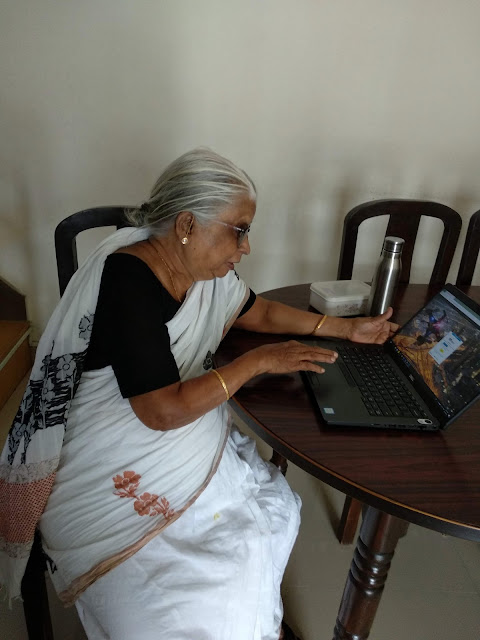#644
Personal Update:- I will be away on travel (Personal/Business) until late 11th April. So there would be a lull.!!
Context: Few Articles/ Messages glorifying LinkedIn+++ in past few days.(As usual, anything Anti Trump would now get a pump in!).
For someone who jumped onto the social media bandwagon early—be it Facebook, Twitter, or LinkedIn—I must admit, these platforms had their golden phase. I joined Facebook in 2007, LinkedIn around the same time, and Twitter not long after. Back then, they offered an unmatched thrill—the excitement of sharing thoughts live, engaging with professional peers, learning in real time, and staying updated on world affairs.
But somewhere around 2017, something changed. The platforms that once felt vibrant began to rot from within. Today, I view them as over-glorified echo chambers where loud opinions drown out genuine dialogue—and Big Tech plays puppet-master, often pushing agendas that disturb democracy more than they support it.
LinkedIn: Facebook with a Skirt / Tie?
What was once a sharp, professional space has become an emotion-driven hall of self-praise, corporate fluff, and passive-aggressive politics. LinkedIn today looks like Facebook in formal attire—glorified status updates disguised as leadership lessons. And far too often, I see users sharing political opinions, unaware that it could quietly sabotage future opportunities.
What alarms me more is the woke politics, ESG, DEI (All Sham) being pushed subtly through posts, hiring drives, and leadership narratives. People don't realise that LinkedIn is also where decision-makers watch—and misjudged posts can close doors behind your back.
Twitter: Censorship Dressed as Moderation
Once a platform for real-time thought exchange, Twitter devolved into an ideological bunker post-2016. The bias against Donald Trump and his voters became evident—almost pathological. While Elon Musk’s entry brought a gust of fresh air, the damage had already been done.
-
The Hunter Biden laptop story was suppressed days before the 2020 U.S. elections—tagged as “Russian disinformation.” We now know it was 100% authentic.
-
COVID origin debates, alternate vaccine views, or lockdown criticism? Flagged or suspended.
-
January 6th narratives were controlled and censored, silencing many conservative voices—even while Antifa-style violence elsewhere got a pass.
Twitter became a tool of propaganda, not a platform for open exchange.
Facebook: Compliance Over Integrity
My discomfort with Facebook is not new. I always felt Mark Zuckerberg lacked a spine—a chameleon more concerned with power than principle. Even during his Harvard days, the guy was a Wishy-Washy.
-
During the 2020 U.S. elections, Facebook censored conservative pages and groups in coordination with U.S. intelligence agencies.
-
The FBI had direct access to flag content for takedown—raising serious questions about state censorship by proxy.
-
And let’s not forget: Zuckerberg himself poured $400+ million through “Zuck Bucks” into local election offices under the guise of “safe voting.” These funds disproportionately boosted turnout in Democrat-heavy areas, skewing the democratic process. [Reference: https://nypost.com/2021/12/14/zuckerbucks-a-dark-money-democratic-scandal/]
Today, he’s trying to backpedal, positioning Meta as an unbiased entity. Sorry, we’re not buying it.
Behind the Curtains: The Real Power Games of Social Media Giants
Many in India may not realise this, but Reid Hoffman (co-founder of LinkedIn) has been a central figure in funding anti-Trump efforts, disinformation campaigns, and political manipulation.
-
In 2018, Hoffman funded a fake Russian bot campaign to discredit Republican Senate candidate Roy Moore—an actual election interference op, later exposed by The New York Times.
-
He’s bankrolled several anti-Trump PACs, and only after backlash did he issue a mild apology.
-
The irony? These very people lecture the world on “election integrity.”
What we’re seeing is not just bias. It’s an active attempt to rig narratives, influence elections, and weaponise platforms.
And now that the political tide is shifting back in favour of Trump, you’ll see these same CEOs slowly “adjusting tone” or pretending to be neutral. Don’t be fooled—it’s self-preservation, not sincerity.
Instagram & WhatsApp: Distractions in Different Packaging
Instagram? I’ve never been on it, and feel no need. It’s a dopamine factory—designed for vanity, not value.
As for WhatsApp, I use it with strict discipline. No groups. No endless forwards. Just clean, direct communication with family and professional contacts. It’s one of the few tools that remains tolerable, as long as you control the usage—not the other way around.
The Price of Walking Away?
Sure, I may lose “visibility” or some updates. But what I gain is peace of mind, authenticity, and intellectual independence. I now prefer to channel my thoughts through my blogs—both professional and personal. My interactions are filtered, thoughtful, and deliberate—not driven by algorithms or outrage.
Why I’m Glad I Quit
-
No more comparison traps.
-
No algorithm playing mind games.
-
No shallow ‘likes’ for dopamine.
-
No fake humility or self-congratulatory nonsense. Especially LinkedIn is horror worse than Indian Movies. hahahhah!
I own my content. I own my thoughts. And I don’t need a “platform” to matter.
Still Curious? Here’s the Other Side
Yes, if you're:
-
A jobseeker: LinkedIn can still help but not much.
-
A creator/artist: Instagram has its niche.
-
Into global news: Twitter might still work if you filter well.
-
In community groups: Facebook offers some utility.
But for many of us, these are no longer must-haves. They're optional tools. And tools must be used—not worshipped.
Final Thought
In a world obsessed with visibility, I’ve chosen clarity.
Big Tech may think they run the world. But I prefer to run my life with purpose, select interactions, and free thought. My voice doesn’t need to echo in the crowd. It just needs to be true.
Karthik
31/3/25 (Boy 3 months of the year flew away!).
PS: Oh Yes, my youtube feed is blank. I have made settings such that the Home screen is always Blank with 0 suggestions. I need to type what I want to view!! So, No distraction either.



























